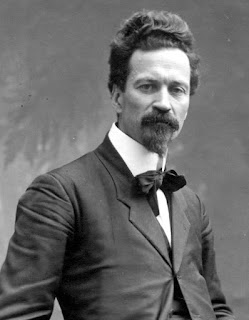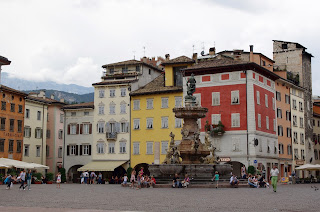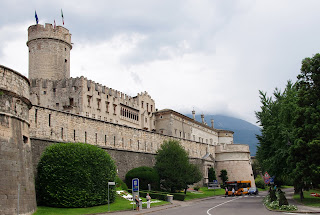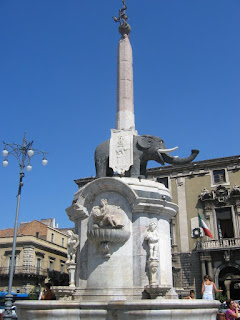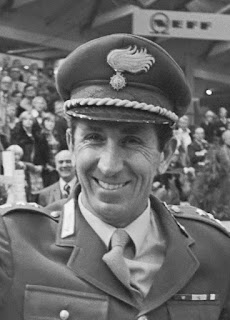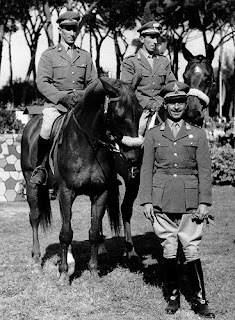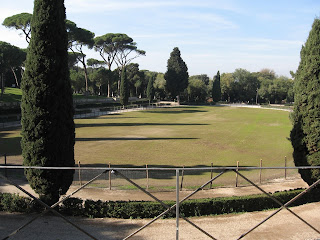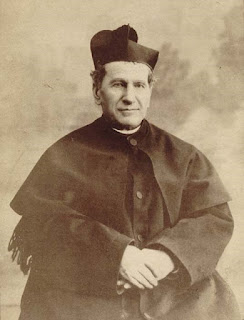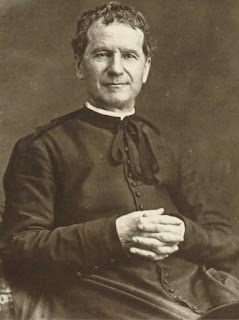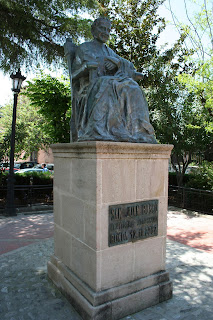Huge crowds turn out for feast day in Catania
| The flower-bedecked carriage of St Agatha at the February 5 celebration in Catania |
One of the largest festivals in the Roman Catholic calendar
takes place on this day every year to celebrate the life of the Christian martyr Saint Agatha of
Sicily.
In Catania, which adopted her as the patron saint of the
city, hundreds of thousands of people line the streets to watch the
extraordinary sight of up to 5,000 citizens hauling a silver carriage said to
weigh 20 tons (18,140kg), bearing a huge statue and containing the relics of
the saint, who died in 251AD.
The procession follows a route from Piazza del Duomo that takes
in several city landmarks and ends, after a long climb along the Via Antonino
di Sangiuliano at Via Crociferi.
The procession begins in the afternoon and finishes deep
into the night. There is an enormous
fireworks display that takes place when the procession reaches Piazza Cavour. The final leg, the Race of the Cord, is the
part that involves the seemingly endless lines of white-smocked citizens
pulling cords attached to the carriage up the long hill of San Giuliano.
As well as being the patron saint of Catania, which may have
been her birthplace and where citizens have long believed she has a calming
influence on the volcanic activity of Mount Etna, as well as preventing earthquakes
and epidemics of disease, Saint Agatha is the patron saint of breast cancer
patients, wet nurses, bell-founders and bakers among others.
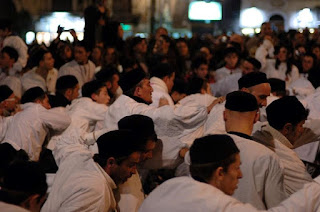 |
| Thousands of citizens form a vast human chain to pull the carriage through the streets of Catania |
These stem from the nature of her legend, in which she was
subjected to unthinkable cruelty including the mutilation of her breasts.
It is said that Agatha was born in either Catania or Palermo
in about 231AD to a wealthy and noble family. At a very early stage in her life
she decided to dedicate herself to God and became a consecrated virgin.
However, she was a naturally beautiful girl and her vows of
celibacy did not deter men from being attracted to her and making unwanted
advances.
One such person was a Roman prefect named Quintianus, who
had been sent by the emperor Decius to govern Sicily, with orders to persecute anyone
found to be doing anything to advance the Christian faith.
When Quintianus encountered Agatha, he was transfixed by her
beauty and offered to spare her from persecution in return for satisfying his
physical desires.
When she refused, he sent her to work in a brothel but she
refused to take any customers. Word of
this reached Quintianus, who locked her in prison and said she would be
tortured unless she renounced her beliefs.
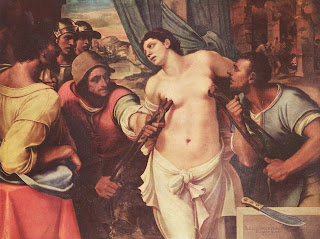 |
| Sebastiano del Piombo's graphic depiction of the cruel torture of the defiant Agatha |
She stuck steadfastly to her promise despite the most awful
treatment, which culminated in the slicing off of her breasts. Sent back to
prison, she was given no food or medical attention but is said to have been
visited by the apostle, St Peter, who supposedly healed her wounds through
prayer.
Nonetheless, she died in prison in 251AD, at the age of only
20 years.
As well as being the patron saint of groups such as
those stricken with breast cancer and other health problems concerning the
breasts, she is also the patron saint of bell-founders on account of her
severed breasts resembling bells, and of bakers because of a special cake made
for the celebrations.
The cakes – often called minni di virgini (virgins’ nipples)
– are filled with sweet ricotta or patisserie cream, covered with marzipan and topped
with glossy white or pink icing with a cherry nipple.
Her remains are housed in
the Badia di Sant’Agata in Catania – the church opposite the city’s Duomo,
which is also dedicated to Saint Agatha.
 |
| The Minni di Virgini cakes that are baked as part of the celebrations |
There are many other churches in Italy and across the world
dedicated to Saint Agatha, including the church of Sant’Agata dei Gotti, in Via
Mazzarino in Rome.
As well as being the patron saint of Catania, Agatha is also
the patron saint of Sorihuela del Guadalimar in Spain, of Molise and San
Marino, and Kalsa, a historical quarter of Palermo.
Saint Agatha is a patron saint of Malta, where in 1551 her
intercession through a reported apparition to a Benedictine nun is said to have
saved Malta from Turkish invasion.
In art, Saint Agatha was often depicted carrying her severed
breasts on a platter, as with Bernardo Luini’s painting in the Galleria Borghese
in Rome, and in a panel of the Polyptych of St Anthony, painted by Piero della
Francesca, which is kept at the National Gallery of Umbria in Perugia.
 |
| The Badia di Sant'Agata |
Travel tip:
The Badia di Sant’Agata in Catania, which overlooks Via Vittorio
Emanuele II, is one of the city’s principal examples of the Sicilian Baroque
style. Opposite the north elevation of
the Duomo, it was designed by Giovanni Battista Vaccarini on the site of an
ancient church and convent dedicated to the saint, which was destroyed in the
earthquake of 1693.
Travel tip:
The procession on February 5 takes in Via Etnea, the
principal shopping street of Catania, an almost dead straight thoroughfare that
stretches from Piazza del Duomo to the Municipio (City Hall) over a distance of
more than 2.5km (1.5 miles), passing through the Piazza della Università and by
the Bellini Gardens. It is lined with
fashionable shops and department stores and is particularly popular on a
Saturday, when it is thronged with huge crowds.
More reading:
The Festival of San Gennaro
The Feast Day of Sant'Agnese of Montepulciano
How the earthquake of 1693 brought devastation to Catania
Also on this day:
1578: The death of portrait painter Giovanni Battista Moroni
1964: The birth of footballer and coach Carolina Morace
(Picture credits: Human chain by Isabella; Cakes by Stefano Mortellaro; Badia di St Agata by Giovanni Dallorto)
